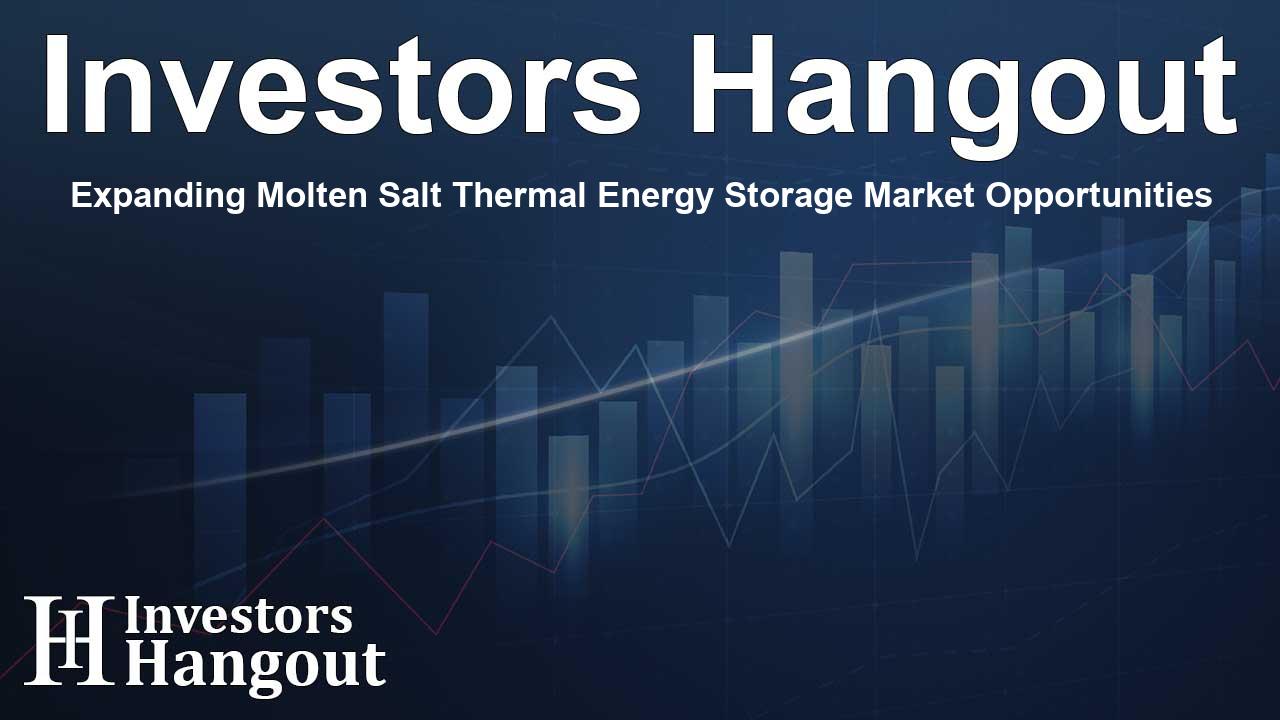Expanding Molten Salt Thermal Energy Storage Market Opportunities

Understanding the Molten Salt Thermal Energy Storage Market
As we dive into the innovative world of thermal energy storage, the molten salt thermal energy storage market stands out with impressive growth projections. Recent insights suggest that the market, valued at approximately USD 8 billion in 2023, is expected to soar to USD 35.29 billion by 2033. This remarkable expansion is fueled by the increasing demand for renewable energy solutions that can efficiently store energy for extended periods.
The Mechanics of Molten Salt Technology
Molten salt thermal energy storage leverages the unique properties of salts, including potassium and sodium nitrate, which possess low freezing points and high heat capacities. This method is particularly efficient as it allows for the economic storage of energy. Once heat is stored in the molten salt, it can remain stable for days, providing a consistent energy supply, even in fluctuating demand scenarios.
Market Scope and Growth Drivers
Forecasts reveal a compound annual growth rate (CAGR) of 16% from 2024 to 2033. The drivers behind this growth include an increasing global reliance on renewable energy sources, bolstered by significant investments and supportive government policies aimed at promoting cleaner technologies.
Regional Insights
Europe is poised to lead the molten salt thermal energy storage market during the forecast period, thanks to its head start in adopting green technologies and supportive regulatory frameworks. The shift towards renewable energy in response to geopolitical circumstances has intensified the focus on energy security in many European nations.
Market Segmentation Overview
The molten salt market is segmented into various categories that help define its dynamics and potential. Notably, in 2023, the parabolic trough systems segment accounted for the largest market share with revenues reaching approximately 3.52 billion. Additionally, the power generation application segment dominated the market, capturing a substantial share of 42% and revenues of 3.36 billion.
Challenges and Opportunities Ahead
Despite its promising outlook, the molten salt thermal energy storage market is not without challenges. The construction and maintenance of the intricate infrastructure required for these systems demand significant capital investment. Furthermore, a general lack of awareness around this technology can hamper its adoption.
Technological Advancements
The rapid evolution of technology presents great opportunities for the molten salt market. Increased research and development efforts are improving system efficiencies and reducing costs, making thermal storage solutions more accessible. Innovations in material science and system design are critical in overcoming the hurdles faced by these systems.
Competitive Landscape
The market is witnessing competition from alternative energy storage technologies such as lithium-ion batteries and pumped hydro storage, both of which offer unique advantages. To maintain its market position, molten salt thermal energy storage must innovate continually and capitalize on its strengths in large-scale energy storage.
Key Players in the Market
Several major companies are actively shaping the molten salt thermal energy storage market. Some of these players include:
- Abengoa
- Acciona
- ACWA
- BrightSource Energy
- eSolar
- Novatec Inc.
- Orano
- Shams Power
- SolarReserve
- Yara International ASA
These companies are contributing to the market through innovative projects and technological advancements, ensuring that molten salt thermal energy storage remains a vital component of the renewable energy landscape.
Frequently Asked Questions
What is the expected growth rate of the molten salt thermal energy storage market?
The market is projected to grow at a CAGR of 16% from 2024 to 2033.
What are the primary applications of molten salt thermal energy storage?
Main applications include power generation, district heating and cooling, and process heating and cooling.
Which regions are expected to dominate the molten salt thermal energy storage market?
Europe is expected to lead the market due to its early adoption of green technologies and supportive policies.
What are the key challenges facing the market?
Significant capital investments required for infrastructure and a general lack of awareness about the technology are major challenges.
How does molten salt thermal energy storage compare to other energy storage technologies?
While molten salt systems excel in large-scale storage, technologies like lithium-ion batteries and pumped hydro storage offer faster response times and different applications.
About The Author
Contact Kelly Martin privately here. Or send an email with ATTN: Kelly Martin as the subject to contact@investorshangout.com.
About Investors Hangout
Investors Hangout is a leading online stock forum for financial discussion and learning, offering a wide range of free tools and resources. It draws in traders of all levels, who exchange market knowledge, investigate trading tactics, and keep an eye on industry developments in real time. Featuring financial articles, stock message boards, quotes, charts, company profiles, and live news updates. Through cooperative learning and a wealth of informational resources, it helps users from novices creating their first portfolios to experts honing their techniques. Join Investors Hangout today: https://investorshangout.com/
The content of this article is based on factual, publicly available information and does not represent legal, financial, or investment advice. Investors Hangout does not offer financial advice, and the author is not a licensed financial advisor. Consult a qualified advisor before making any financial or investment decisions based on this article. This article should not be considered advice to purchase, sell, or hold any securities or other investments. If any of the material provided here is inaccurate, please contact us for corrections.
